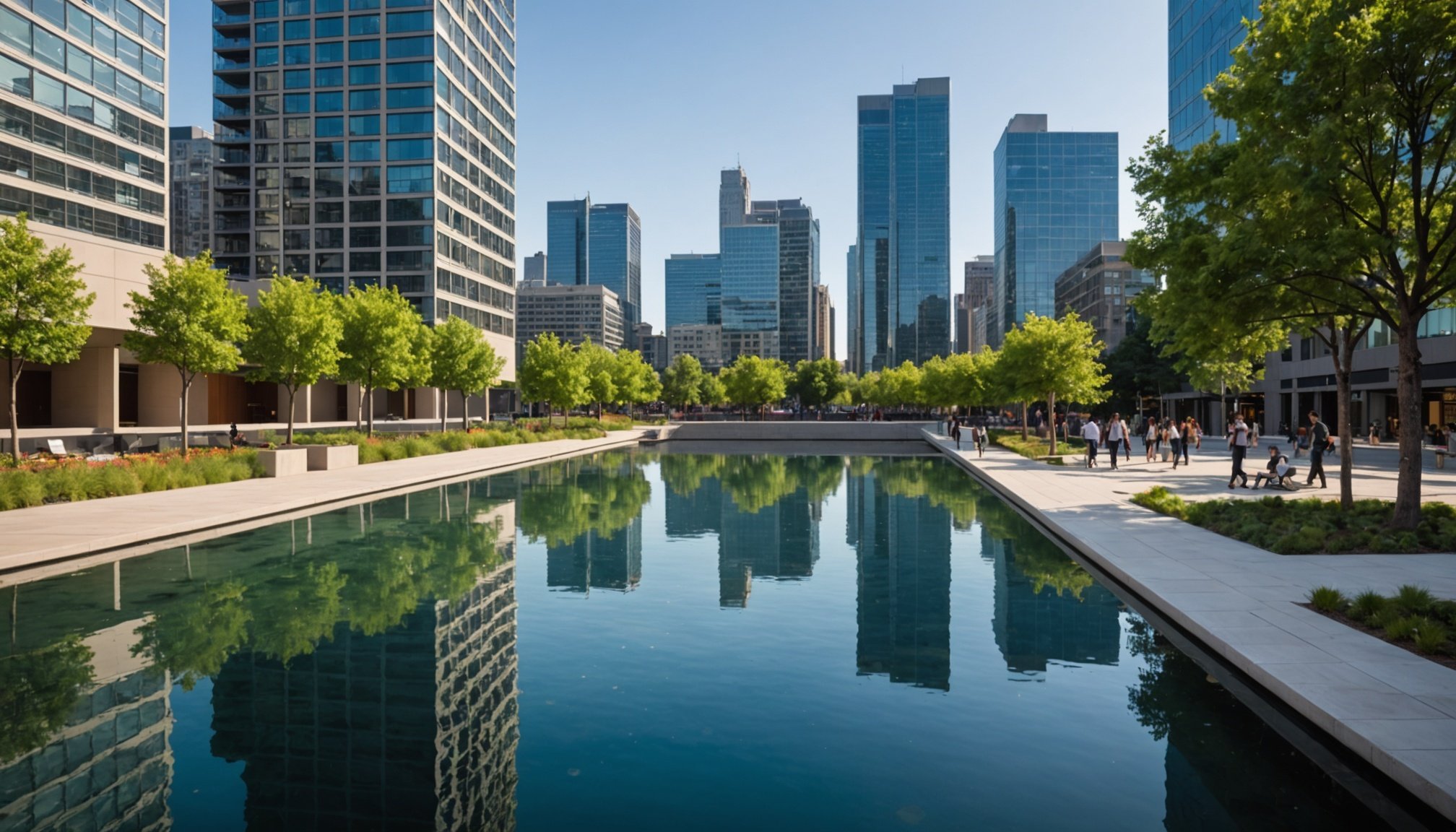
Walkable Cities Sustainability Benefits for Urban Living
In today’s rapidly evolving urban landscapes, the concept of walkable cities has emerged as a pivotal component of sustainable urban planning. As more people flock to urban areas, the benefits of creating cities that prioritize pedestrians cannot be overstated. The idea of walkability is not just about convenience; its about enhancing the quality of life, reducing environmental impact, and fostering a sense of community.

Understanding Walkable Cities
A walkable city is one designed with pedestrians in mind, offering safe and accessible routes to various amenities and services. These cities focus on reducing dependency on cars, which in turn lowers pollution and promotes healthier lifestyles. The benefits are manifold, impacting everything from environmental sustainability to economic vitality.
Environmental Benefits of Walkable Cities
One of the most significant sustainability benefits of walkable cities is the reduction in carbon emissions. By encouraging walking instead of driving, cities can significantly lower their carbon footprint. This shift also reduces reliance on fossil fuels, contributing to cleaner air and a healthier planet.
Moreover, walkable cities often incorporate green spaces and parks, which enhance urban biodiversity and help manage urban heat. These spaces not only provide aesthetic value but also improve air quality and offer habitats for various species.
Case Study: Copenhagen
Copenhagen serves as a leading example of a walkable city. The city’s commitment to reducing car dependency has resulted in extensive cycling and pedestrian networks. This focus has not only improved air quality but also fostered a strong sense of community.
Economic Impact of Walkable Cities
Walkable cities are economically vibrant. By attracting more foot traffic, local businesses thrive, contributing to the overall economic health of the area. Studies have shown that areas with high walkability experience increased property values and attract more tourists.
Additionally, reduced transportation costs for residents mean more disposable income, which can be reinvested into local economies. This economic cycle supports both the community and the environment.
Local Business Growth
Businesses situated in walkable areas often see higher sales due to increased pedestrian traffic. With people spending more time in these areas, businesses benefit from both locals and tourists alike.
Social and Health Benefits of Walkability
Beyond environmental and economic benefits, walkable cities foster social interactions and healthier lifestyles. When people walk more, they engage more with their surroundings and neighbors, building a stronger community bond.
Health-wise, walking is an excellent form of exercise, reducing the risk of chronic diseases such as obesity, diabetes, and heart disease. By promoting a more active lifestyle, walkable cities contribute to the overall well-being of their residents.
Community Engagement
Walkable cities encourage community events and interactions. Streets designed for pedestrians often host markets, festivals, and other community gatherings, creating a lively and engaging urban environment.
Designing Walkable Cities
Creating a walkable city involves thoughtful urban planning. It requires the integration of pedestrian-friendly infrastructure, such as sidewalks, crosswalks, and public transportation options. Urban planners must consider the needs of all residents, ensuring accessibility for all ages and abilities.
Additionally, incorporating elements like street art, lighting, and seating areas can enhance the walking experience, making it more enjoyable for residents and visitors alike.
Lessons from Bioclimatic Architecture
Incorporating bioclimatic architecture into city planning can further enhance walkability. This approach focuses on using natural resources and conditions to optimize building designs, creating comfortable environments without excessive energy use.
Challenges and Solutions
Despite the numerous benefits, transforming a city into a walkable one presents challenges. Existing infrastructure often prioritizes vehicles, making it difficult to retrofit cities for pedestrian use. However, solutions like pedestrian zones, improved public transport, and community initiatives can pave the way for more walkable environments.
Overcoming Infrastructure Barriers
Retrofitting cities for walkability requires a comprehensive approach. This includes policy changes, investments in infrastructure, and community engagement to support the transition.
Global Examples of Walkable Cities
Many cities around the world have successfully embraced walkability. From the cobblestone streets of Florence to the vibrant neighborhoods of Tokyo, these cities demonstrate the potential of pedestrian-focused urban design.
Florence’s Pedestrian Zones
Florence has transformed many of its historic streets into pedestrian-only zones, enhancing the city’s charm while reducing traffic congestion and pollution.
The Future of Walkable Cities
The future of urban living lies in walkability. As cities continue to grow, the need for sustainable and livable environments becomes increasingly important. By prioritizing pedestrians, cities can create healthier, more vibrant, and sustainable communities.
In conclusion, the benefits of walkable cities extend far beyond convenience. They contribute to environmental sustainability, economic vitality, and social well-being. As urban areas continue to expand, the adoption of walkable city principles will be crucial in creating a better future for all.
Further Reading on Urban Planning
For more insights on sustainable urban planning, consider exploring the United Nations’ Sustainable Development Goals that focus on making cities inclusive, safe, resilient, and sustainable.

FAQs
What makes a city walkable?
A walkable city is characterized by pedestrian-friendly infrastructure, accessible amenities, and reduced reliance on cars, promoting safety and convenience for pedestrians.
How do walkable cities benefit the environment?
Walkable cities reduce carbon emissions by promoting walking over driving, incorporate green spaces, and improve air quality, contributing to a healthier environment.
What challenges do cities face in becoming walkable?
Cities face challenges such as existing car-centric infrastructure and the need for policy changes and investments to support pedestrian-friendly initiatives.
This article contains affiliate links. We may earn a commission at no extra cost to you.